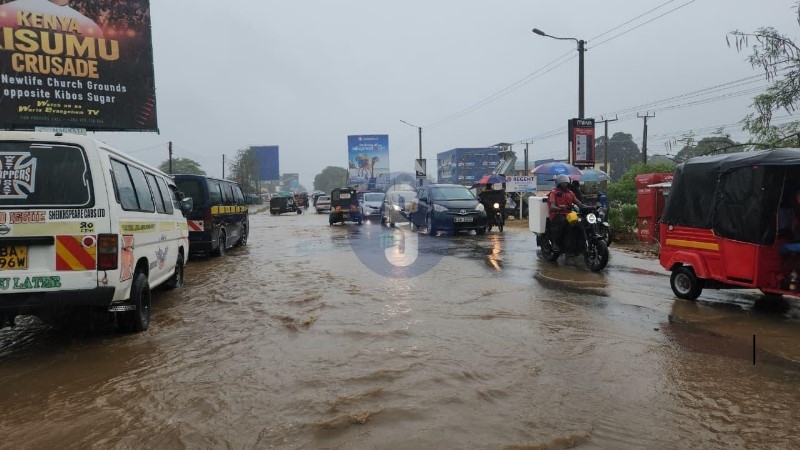

Every year on November 5, the world observes World Tsunami Awareness Day, a global reminder of the need to understand tsunamis what causes them, how they strike, and how communities can prepare.
According to the United Nations (UN), the day was officially designated in December 2015 through General Assembly Resolution 70/203.
The resolution urges member states, international organizations, and civil society to mark the day through education and awareness activities.
UN Secretary-General António Guterres has emphasized that “Tsunamis are rare events whose consequences can be extremely deadly.”
His words underscore the importance of sustained vigilance and preparedness, even in regions that may seem safe from such disasters.
The date of the observance traces its roots to a powerful story from 1854 in Japan.
After a major earthquake struck, a village leader named Hamaguchi Goryō noticed the receding sea and other warning signs of an incoming tsunami.
To alert his community, he set fire to harvested rice sheaves known as inamura, drawing people’s attention and leading them to higher ground.
Moments later, a massive tsunami struck the village.
Hamaguchi’s quick thinking and sacrifice became emblematic of proactive disaster preparedness.
When the UN established World Tsunami Awareness Day, it chose November 5 to honor this story, linking traditional knowledge to modern global action.
The day stands not only as a remembrance of past tragedies but also as a symbol of hope — a reminder that awareness and preparation can save lives
Tsunamis are infrequent, yet when they occur, they rank among the most deadly and destructive natural hazards.
Over the past century, more than 120 fatal tsunamis have been recorded worldwide, claiming over 260,000 lives.
These disasters are not confined to any one region or season.
Though often associated with the Pacific Ocean, tsunamis can strike any coastline bordering the sea or ocean.
They are triggered by undersea earthquakes, volcanic eruptions, or landslides that displace vast amounts of water, sending waves racing across entire ocean basins.
These waves can travel immense distances and reach shores far away, often leaving little time for warning.
Japan’s Minister for Foreign Affairs, Iwaya Takeshi, once remarked, “It is our responsibility to ensure that the memory of this tragic event never fades, and that the grim lessons learned are passed on.”
His words capture the spirit of the observance — ensuring the past guides future safety.
Education, early warning systems, evacuation planning, and resilient infrastructure remain essential in saving lives when disaster strikes.
The official theme for World Tsunami Awareness Day 2025, “Be Tsunami Ready and Invest in Tsunami Preparedness” reflects this continuing call for action.
National meteorological and disaster management centers stress that early warning systems must be supported by clear public communication and well-marked evacuation routes.
At the same time, community-based knowledge is equally vital. Recognizing natural warning signs such as sudden sea withdrawal, strong ground shaking, or a loud ocean roar can make the difference between life and death.
Preparedness is not only about technology but also about people.
Investing in training, strengthening infrastructure, and holding regular evacuation drills often proves far more cost-effective than responding after disaster strikes.
Every individual, family, and community has a role to play.
Those who live, work, or spend time near coastal areas must understand their level of risk.
Knowing whether one’s area lies within a tsunami hazard zone and learning how to respond when warning signs appear is critical.
When a pronounced sea withdrawal, strong tremor, or loud ocean roar occurs, the immediate action should be to move to high ground without hesitation.
Having a clear evacuation plan, knowing the locations of higher ground or designated tsunami shelters, and practicing escape routes can save lives.
Families should ensure every member knows what to do in the event of a tsunami.
Over the years, this global observance has highlighted progress made in once-vulnerable coastal regions.
Many have invested in tsunami-ready systems, established early warning networks, mapped evacuation routes, and expanded community education.
These efforts show tangible progress, but challenges persist.
International organizations continue to enhance satellite-based early warnings, seismic sensors, and communication platforms capable of reaching even remote islands.
The global goal is to establish tsunami-ready communities places where no one is caught unaware.
Despite progress, many regions still face technical capacity gaps, limited funding, and uneven awareness levels.
Compounding the threat, climate-induced sea-level rise increases the reach and destructive potential of future tsunamis.
Recent studies highlight how preparedness directly saves lives.
In Japan’s Noto Peninsula, researchers analyzed smartphone geolocation data following a tsunami-triggering event.
The study revealed that residents evacuated quickly and efficiently to higher ground, a reflection of widespread public awareness and community drills.
Their swift response served as living proof that education and readiness make a measurable difference.
As coastal populations grow and sea levels rise, the potential impact of tsunamis continues to increase.
What once seemed a distant threat now poses a tangible danger to millions living near shorelines.
The global message is clear: no one is beyond risk, and scientific early warning systems combined with local awareness can mean the difference between survival and catastrophe.
Ultimately, November 5 is not merely a date of remembrance; it is a call to action.
It urges governments and citizens alike to invest in education, infrastructure, and resilience.
Each year, the day reminds the world to build stronger coasts, better-prepared communities, and systems that leave no one behind.
World Tsunami Awareness Day underscores that while tsunamis cannot be prevented, their impact can be minimized through understanding, readiness, and rapid response.
The enduring story of Hamaguchi Goryō and his burning rice sheaves remains a timeless lesson in courage, awareness, and the power of preparation.
By learning from the past and planning for the future, every
nation, community, and individual can contribute to a world that is truly
tsunami ready.


















